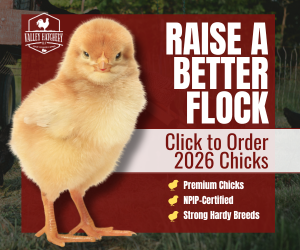kesrchicky16
Songster
- Dec 13, 2016
- 503
- 478
- 151
Next spring I plan on not fighting broody hens. So I will have some little chicks running around being extra bodies that I won't want overwintering.
I have read that meat birds are often slaughtered at 8 weeks. I have "why not" chick that hatched this year about 7 weeks now. It just seems really tiny. Is that because being dual purpose or just the specific genetics or at they really tiny and that is just the balance of feed cost vs bird size?
This particular bird is destined to grow up. If She my aunt will add her to her flock. If He I'm not certain yet. Maybe locked up in a breeding pen. Parentage is Mama = EE Papa = Silver Laced Wyandotte cross.
Also feeding questions about Table birds. My flock of 24 mature birds ate 1/4 of the food they do now during the summer. I cut back feed and bought higher protein % as they left more and more in the dishes because of free range foraging. And increased until they have few leftovers again. If I want good size meat birds can I let feed they that way too?
I have read that meat birds are often slaughtered at 8 weeks. I have "why not" chick that hatched this year about 7 weeks now. It just seems really tiny. Is that because being dual purpose or just the specific genetics or at they really tiny and that is just the balance of feed cost vs bird size?
This particular bird is destined to grow up. If She my aunt will add her to her flock. If He I'm not certain yet. Maybe locked up in a breeding pen. Parentage is Mama = EE Papa = Silver Laced Wyandotte cross.
Also feeding questions about Table birds. My flock of 24 mature birds ate 1/4 of the food they do now during the summer. I cut back feed and bought higher protein % as they left more and more in the dishes because of free range foraging. And increased until they have few leftovers again. If I want good size meat birds can I let feed they that way too?


 It was really hard for us(me especially) at first but we won't go back. Knowing what the bird ate and how it was treated and lived and even how it died is such a blessing. We do care about all of our cockerals they get love and attention if they get an injury they get care and treatment just like any of our other birds would.
It was really hard for us(me especially) at first but we won't go back. Knowing what the bird ate and how it was treated and lived and even how it died is such a blessing. We do care about all of our cockerals they get love and attention if they get an injury they get care and treatment just like any of our other birds would.

